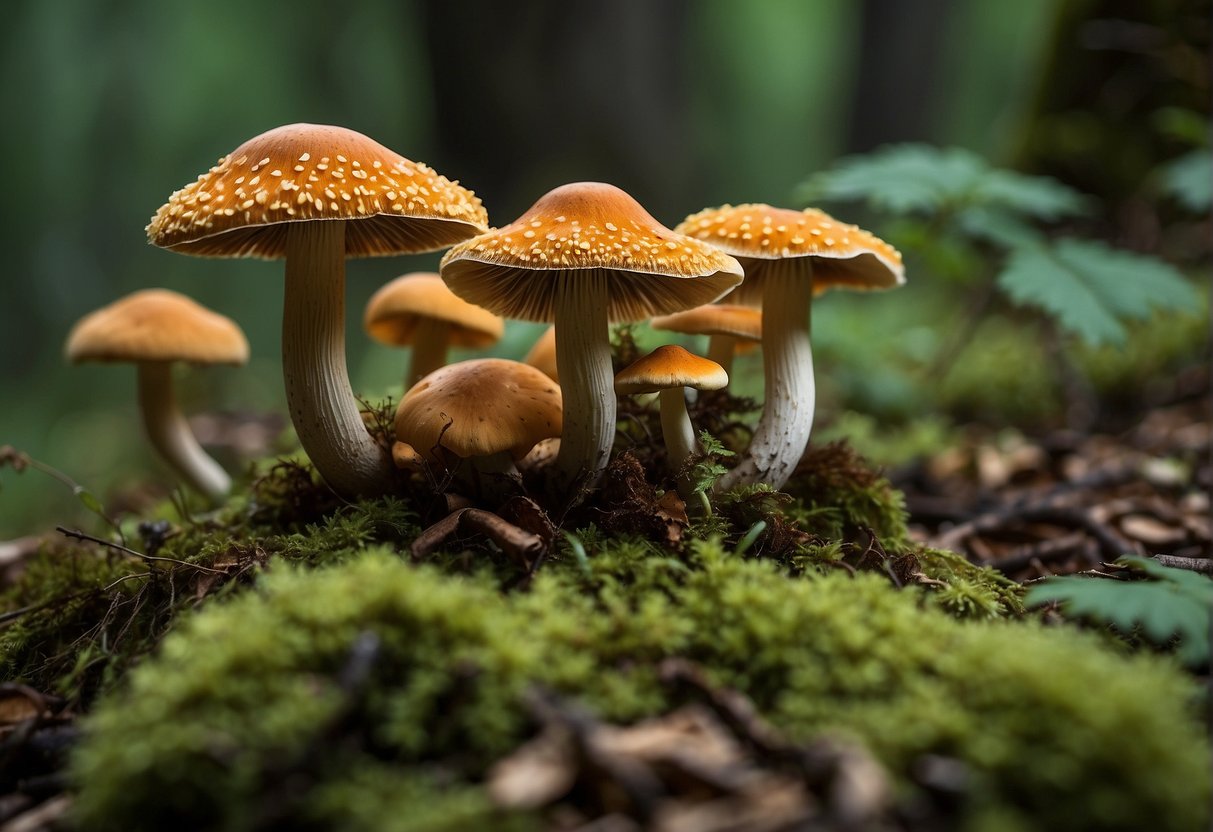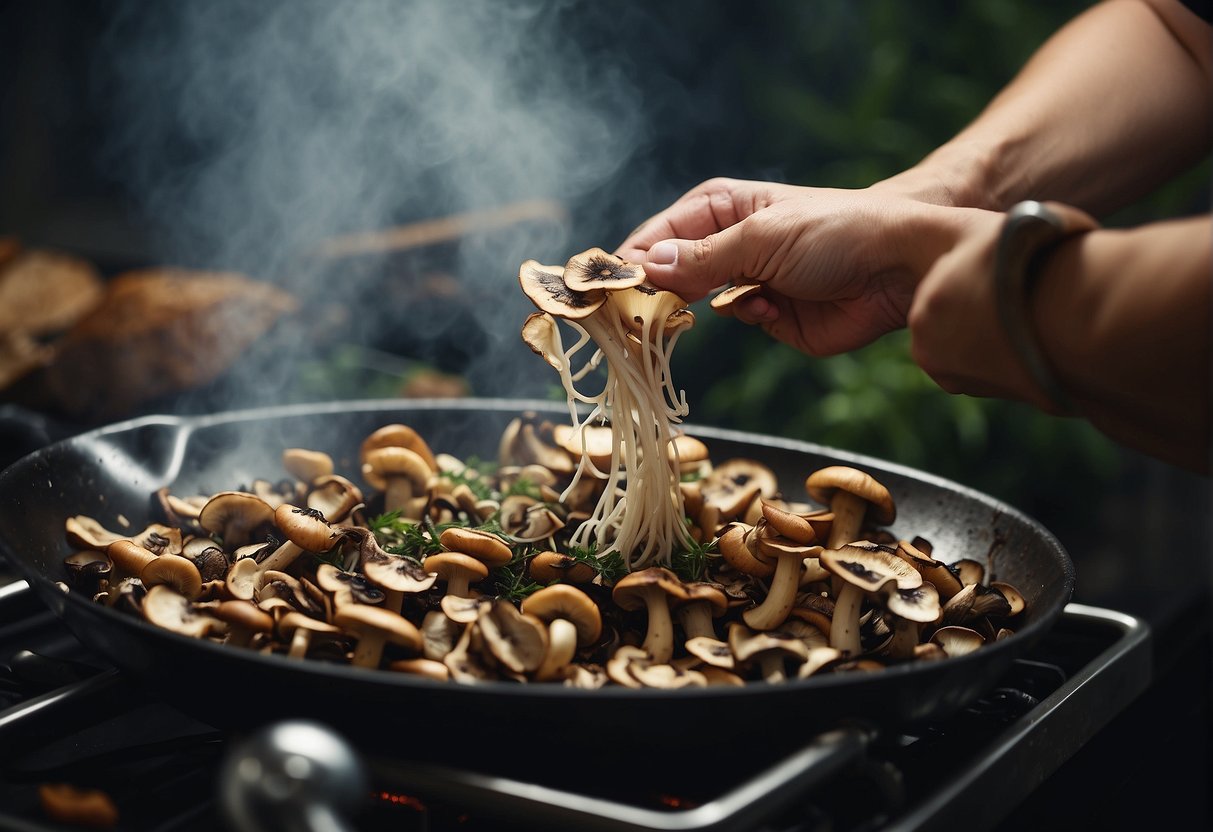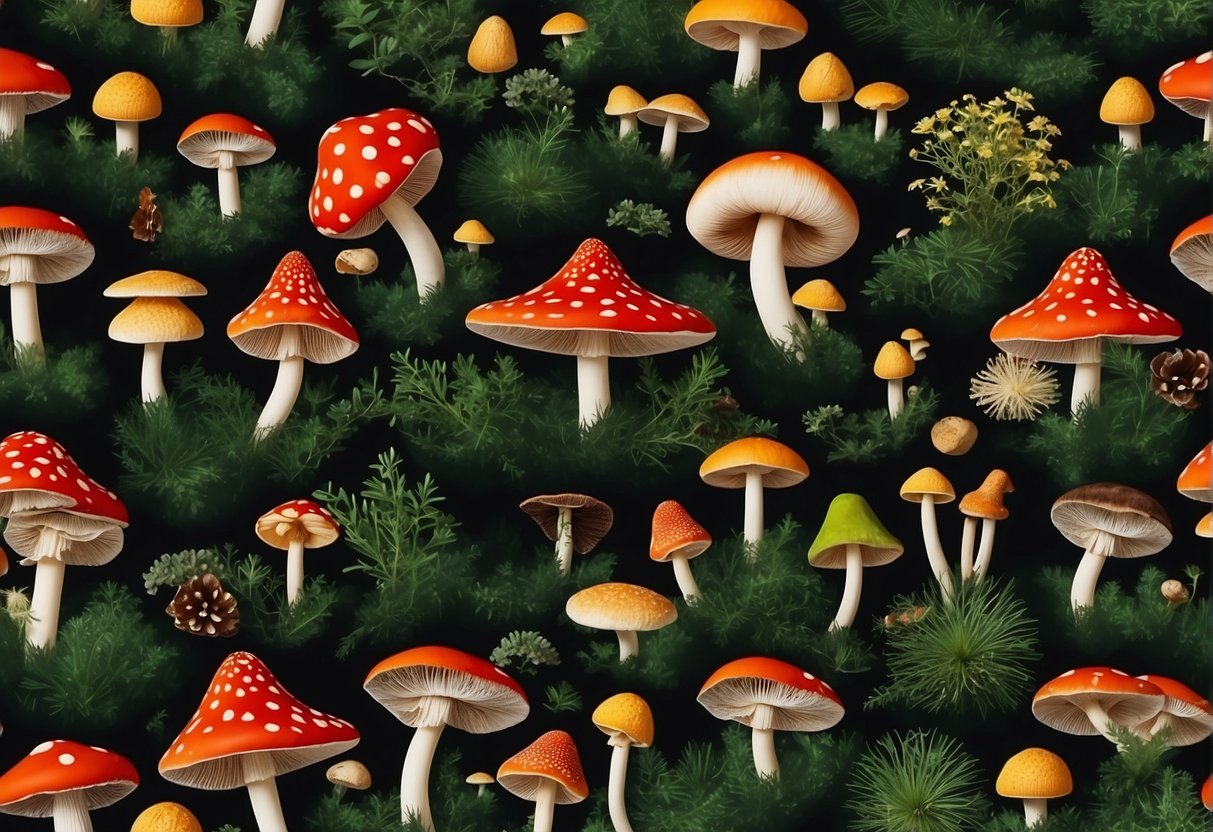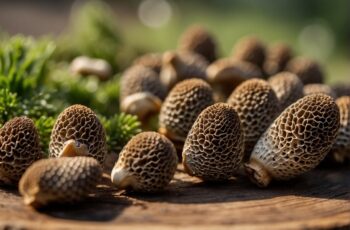When heading into the woods, one of the most rewarding experiences you can have is foraging for wild mushrooms. These natural delights not only offer a unique culinary experience but also connect you to the environment in a truly special way. Knowing which mushrooms are safe to eat is crucial. With an incredible array of shapes, sizes, and colors, wild mushrooms captivate with their diversity, but it’s important to approach foraging with knowledge and caution. Some are delicious and nutritious; others can be dangerously toxic.

Identifying safe varieties involves understanding their habitats and growth patterns. Seeking out and identifying edible mushrooms can be a fulfilling outdoor activity, but it requires a good foundation of knowledge to do so safely. Many mushrooms are safe and prized for their culinary uses, such as the well-known Morels or the sought-after Chanterelles. The key is to learn not only what to look for but also what to avoid. Each safe mushroom has its distinct features, and familiarizing yourself with these can help ensure that your foraging is both enjoyable and safe. By understanding the characteristics of edible species, you can confidently forage for mushrooms that will enhance your cooking and provide a natural source of nutrients.
Key Takeaways
- Safe foraging requires knowledge of edible mushrooms and their distinct characteristics.
- Some wild mushrooms are culinary treasures, but correct identification is essential for safety.
- Edible mushrooms offer unique flavors and nutrients, making them worth the careful search.
Fundamentals of Mushroom Foraging
When you step into the forest, mushroom foraging can be a rewarding experience. But, your ability to discern which fungi are edible and which are poisonous is crucial. As a mushroom hunter, pay close attention to the following key principles:
-
Identification: Begin by familiarizing yourself with common edible mushrooms and their lookalikes. Study trustworthy field guides or consult experts to be precise in your identification.
Common Edible Common Lookalike Morel False Morel Chanterelle Jack O’Lantern Porcini Bitter Bolete -
Safety First: Always exercise caution. If unsure, do not eat it. Some mushrooms contain toxins that can pose serious health risks.
-
Local Species: Focus on species native to your area. This narrows down the list of potential edible and poisonous mushrooms to learn.
-
Learn from Experts: Join local mushroom hunters or clubs. Their expertise can be invaluable to your mushroom hunting ventures.
-
Habitat: Mushrooms thrive in different environments. Learn which species grow in which conditions to locate more edible fungi.
-
Respect Nature: Be mindful of overharvesting. Limit your foraging to ensure mushrooms can continue to reproduce.
By adhering to these guidelines, you’ll enhance your foraging knowledge and enjoy the bounty of nature safely. Happy mushroom hunting!
Popular Edible Mushrooms and Their Habitat
Embarking on a foraging adventure means understanding where to look for prime edibles. Certain species thrive in specific conditions and locations, so knowing their preferred habitat is key to a successful haul.
Morels and Their Unique Habitat
If you’re in search of Morels, early spring is your ideal foraging season in North America. Look for these distinctive mushrooms in wooded areas with abundant hardwoods. They have a symbiotic relationship with old trees, often appearing in areas with decaying matter. Morels enjoy the company of ash, elm, and apple trees, but they steer clear of heavy pine concentrations.
Chanterelles and Their Growth Environment
Chanterelles are prized for their golden hue and a slight peppery taste. Summer through early fall in North America and Europe marks the chanterelle season. Keep an eye out for them in damp, mixed forests where oaks and conifers provide a canopy above; they tend to shy away from areas dominated solely by pines. These mushrooms don’t grow on wood but rather soil enriched by decaying leaves and wood.
Oyster Mushrooms and Cluster Growth
The Oyster Mushroom, diverse in hues from gray to tan to white, forms impressive clusters on the sides of decaying hardwood trees. The firm, fan-shaped caps make them instantly recognizable. These gregarious fungi prefer the companionship of host woods such as aspen and beech and can be found in North America across all seasons, stirring up delight with their resilience and preference for vertical growth on trees’ trunks.
Preparing and Cooking Wild Mushrooms

When venturing into the woods to forage edible mushrooms like chanterelle, oyster, puffball, and king bolete, it’s crucial to ensure proper identification and cooking techniques to avoid toxic varieties and to get the optimal flavor and health benefits.
Cooking Methods for Safety and Flavor
Edible Mushrooms:
Before cooking, it’s essential to clean your mushrooms gently with a brush or damp cloth and to cook them thoroughly. This deactivates any potentially harmful compounds and enhances their natural flavors.
- Chanterelles: Sauté in butter for a golden, aromatic dish.
- Oyster Mushrooms: Grill to bring out their delicate texture.
- Puffball Mushrooms: Slice and pan-fry until crisp.
- King Bolete (Porcini): Ideal for risottos with their rich taste.
- Hen of the Woods: Roast to accentuate their earthy flavor.
- Bearded Tooth (Lion’s Mane): Sear for a seafood-like treat.
Note: Always cook wild mushrooms; never consume them raw.
Health Benefits and Nutritional Value
Nutritional Profile:
Edible mushrooms are not just about taste; they’re a treasure trove of health benefits, packed with vitamins and minerals.
- Vitamins: Such as B complex for energy and immune support.
- Minerals: Including selenium, copper, and potassium for various health functions.
- Fiber: Which is beneficial for digestive health.
Potential Health Impacts:
Regular consumption of edible mushrooms may contribute to overall health, potentially supporting cancer prevention and lowering the risk of chronic disease due to their antioxidant properties. Additionally, they’re low in calories and can be a great addition to your diet if you’re looking to maintain a healthy weight.
Remember: To fully enjoy their benefits, verify that your mushrooms are edible and cook them properly.
Recognizing and Avoiding Dangerous Varieties

When you’re in the wild, your ability to distinguish between edible and harmful fungi can mean the difference between a delightful meal and a medical emergency. Accurate identification is critical, and even experienced mycologists exercise caution.
Identifying Toxic Mushrooms
Toxic mushrooms carry poisons that can cause symptoms from mild gastrointestinal discomfort to severe organ failure. Learn to recognize dangerous traits:
- White Gills: Avoid mushrooms with white gills, which can be a sign of the deadly Amanita family.
- Red on the Cap or Stem: This can be an indicator of toxicity.
- Irregular Cap Shapes: False morels, which look similar to the prized true morels, are toxic and should be avoided.
Consulting a field guide is a helpful starting point, but when in doubt, always forgo eating a mushroom that you cannot identify with certainty.
The Risk of Mushroom Lookalikes
Many edible mushrooms have lookalikes that are poisonous, making identification challenging:
- Comparison: Place suspected mushrooms side by side with images from reliable sources.
- Consultation: Engage a local mycologist or joining a foraging group for expert advice.
Ingesting a lookalike can lead to symptoms like vomiting or diarrhea, and some cases may be fatal. The death cap and the deadly galerina have been mistaken for their edible counterparts but contain deadly toxins. Always err on the side of caution and avoid consuming mushrooms if you’re not absolutely sure of their safety.


